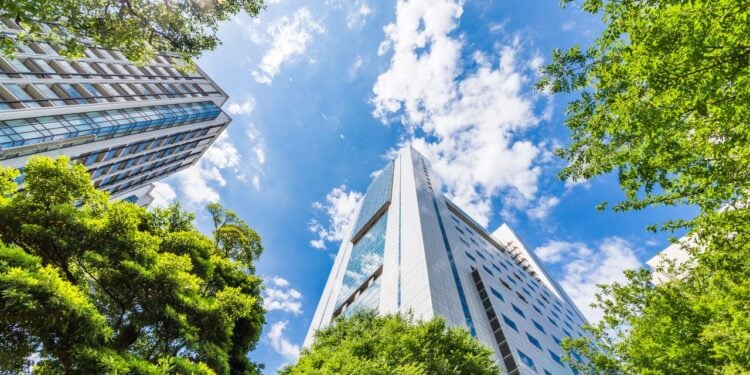- Ensuring outdoor environments or biophilic elements are in workspaces can improve employee well-being, creativity, and productivity.
- Incorporating natural elements like wood, plants, and natural light into office design can address challenges where outdoor workspaces aren’t feasible.
- Outdoor workspaces must provide reliable internet connectivity, charging facilities, and comfortable, climate-sensitive environments to be functional and appealing.
This article was written by SmithGroup’s Todd Kohli for Work Design Magazine.
A renewed focus on physical and mental well-being has led people the world over to reevaluate and recalibrate many facets of their lives. Spending more time outdoors and safeguarding one’s physical and mental health — especially while at work — have become top priorities across generations.
As designers, we’ve long understood the positive impact that gardens, trails, terraces, outdoor offices and other natural and biophilic solutions can have on employees. But not all workspaces are created equally. So, designers are finding new opportunities to help clients bring the benefits of Mother Nature to the office door.
Access to Nature is a Must
As humans, we instinctively want to spend time outdoors, where fresh air, sunshine, flowers and trees have a naturally soothing and restorative effect on our bodies and minds. But as employees, too many of us spend long stretches of time indoors breathing in recirculated air and staring at a computer screen with limited movement throughout the day.

According to Professor Kimberly Elsbach, who studies workplace psychology at the University of California, Davis, research indicates that “staying inside, in the same location, is really detrimental to creative thinking. It’s also detrimental to doing that rumination that’s needed for … a person to arrive at an ‘aha’ moment.” Elsbach suggests that getting outside and experiencing a natural environment, even for a few minutes, is restorative.
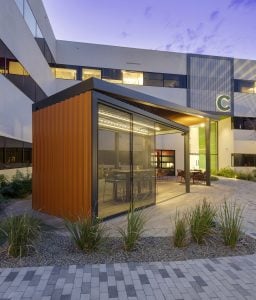
Many organizations agree with this perspective and have incorporated outdoor amenities and spaces that make it easier for employees to breathe in fresh air, recharge their bodies and quiet their minds while at work. A few of the spaces that SmithGroup has created for clients include outdoor meeting spaces, terraces outfitted with fireplaces and greenery, sky gardens, courtyards, walking paths, areas for restorative “play” and more.
When it came time for the City of Sunnyvale, California to develop a new city hall and civic center, access to nature and well-being were among the city’s top design priorities for the facility and its surrounding site.
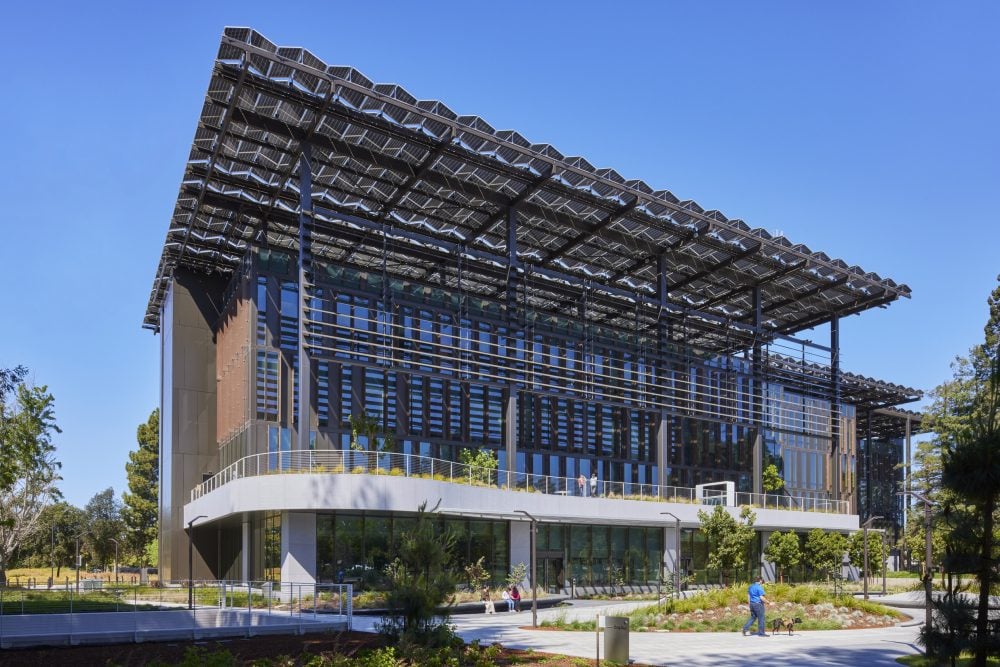
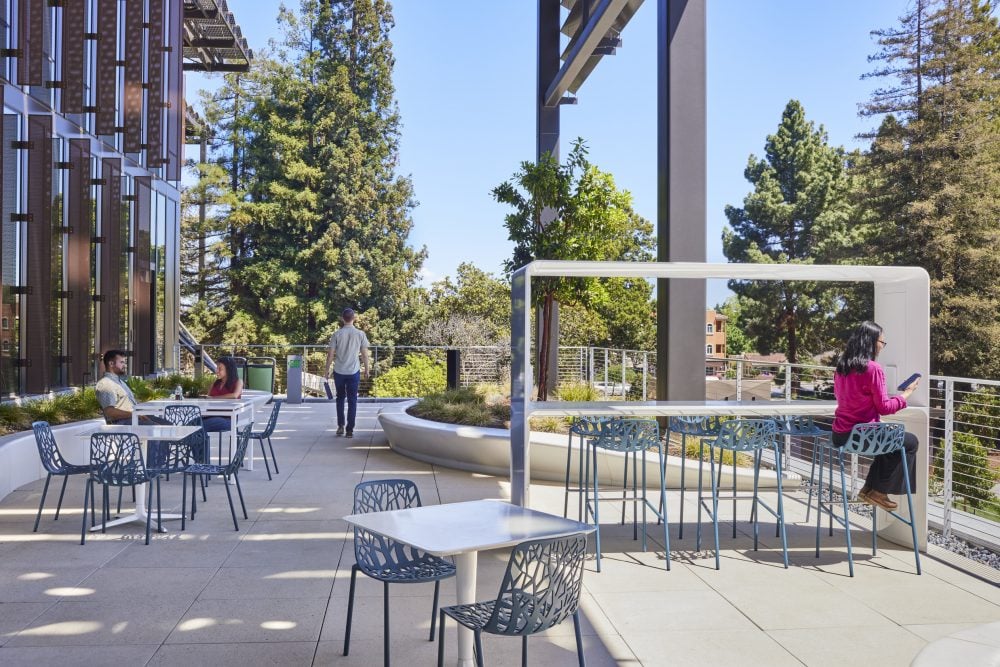
The highly sustainable solution developed by SmithGroup’s team of designers and landscape architects embraces the site’s natural beauty, which includes over 900 trees and majestic views of mountains in the distance. The grounds, which include new courtyards, plazas and two sky gardens, are programmed to accommodate outdoor meetings, phone calls and breaks — ideal for employees that want to work outside of the office. For those that want a deeper connection with nature, the design also adds six new acres of open space and more than two miles of interpretive trails and sidewalks.
Biophilic Design
For some employees, outdoor workspaces aren’t an option due to local climate, inclement weather, and building, budget and site constraints. A global report on the impact of biophilic design in the workplace suggests that organizations that incorporate natural elements and access to the outdoors into their workplaces experience a 6% boost in employee productivity and a 15% boost in creativity compared to offices that are devoid of daylight and nature.

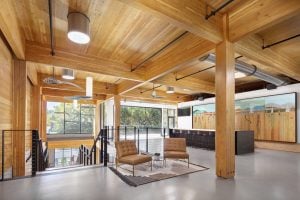
At DPR Construction’s Sacramento office, cross-laminated timber beams, exposed woodgrain panels, a custom-designed seed wall, oversized sliding windows, grow columns and an open-air terrace are a few of the biophilic elements that help to bring nature into the physical office.
Change of Scenery
Whether we realize it or not, the human brain needs to be stimulated to maintain focus and function at its full capacity. In an article published by Vivian Manning-Schaffel, the writer explores the science behind mixing up physical locations and shares why a change of scenery can shift one’s outlook.
Forcing a little change of scenery can help us feel invigorated and more creative, as it forces our brain to process new surroundings and think in new ways.
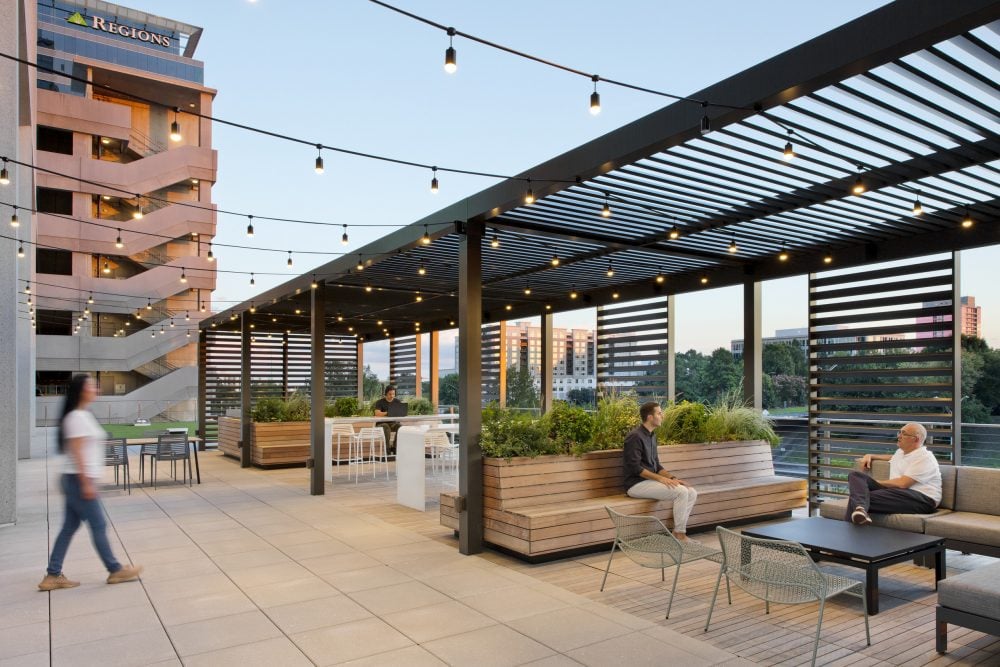
Psychologist and author Amy Johnson suggests that switching things around helps to “wake up” the brain. “When you change things up, your brain is forced to be a little more open and receptive …. This can absolutely affect our mood, our outlook and productivity.”
Johnson contends that even simple changes like working in front of a window or stepping outdoors for a few moments can clear your mind, bring on a burst of creativity and alleviate mental fatigue.
Regardless of where employees choose to work, spending time outdoors re-establishes the body’s natural balance of sympathetic and parasympathetic responses, which enables the body to stay relaxed when undertaking (or returning to finish) complex tasks.
Don’t Forget About Connectivity …
We all understand that the purpose of being at work is, well, to work. When offering employees the option of working outdoors, it’s imperative that these spaces seamlessly extend the functionality of the physical office.
Whether working from the rooftop garden, a plaza, terrace or another outside location on the premises, Wi-Fi and network connectivity must function the same as if the employee was working at a desk in the center of the office. For instance, the plazas and courtyards at Sunnyvale City Hall are equipped with power pedestals to help employees keep devices charged and stay connected while working outdoors.
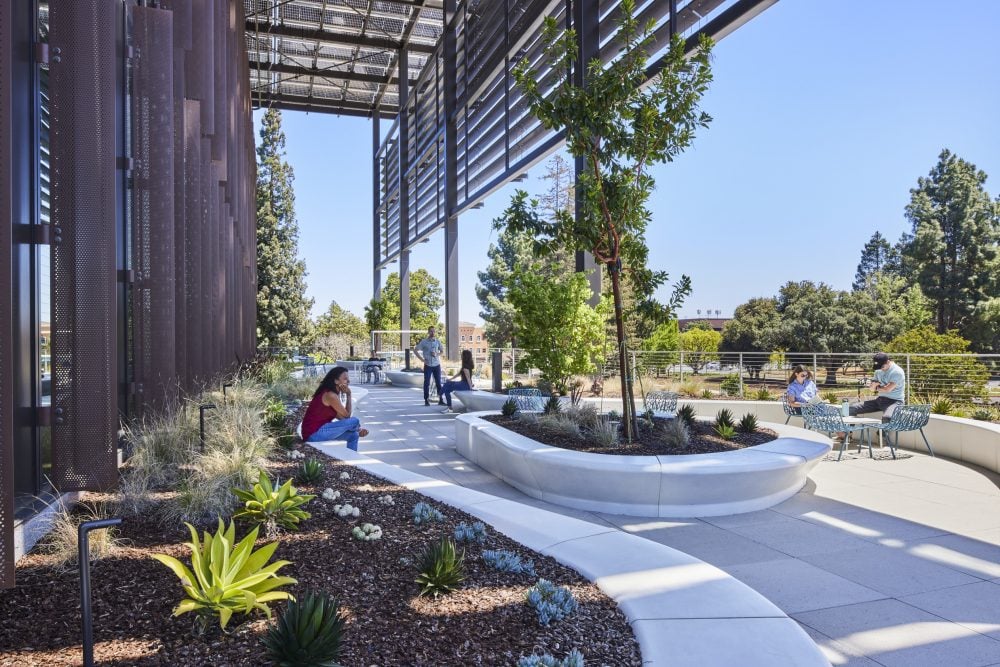
… and Comfort
Outdoor workspaces also need to be comfortable. The landscape architecture experts that developed the project site plan and overall site masterplan for Sunnyvale City Hall were acutely aware of environmental issues affecting the region.
The team took great care to create a design that optimizes microclimates to maximize outdoor thermal comfort across all outdoor programmed areas, including the on-grade plazas, trails and sky gardens.
Comfort was also a key consideration for the team when assessing and specifying materials and critical building components such as surfaces, ground coverings, seating, shading structures and more. The team took special care to incorporate sustainable products and equipment that achieved functional requirements and enhanced the visual appeal of the spaces.
The Future of Outdoor Work
The future of work is demonstrably linked to open spaces, biophilic design elements and a seamless connection to nature. When buildings prioritize sustainability and integrate democratic access to public green spaces, they not only create a vibrant and engaging environment, but also fulfill a fundamental human need for connection with the natural world.
This shift towards working outdoors and biophilic design isn’t just a trend; it’s a necessity for owners, workers and staff to thrive in a healthy and productive work environment.


 Dr. Gleb Tsipursky – The Office Whisperer
Dr. Gleb Tsipursky – The Office Whisperer Nirit Cohen – WorkFutures
Nirit Cohen – WorkFutures Angela Howard – Culture Expert
Angela Howard – Culture Expert Drew Jones – Design & Innovation
Drew Jones – Design & Innovation Jonathan Price – CRE & Flex Expert
Jonathan Price – CRE & Flex Expert

